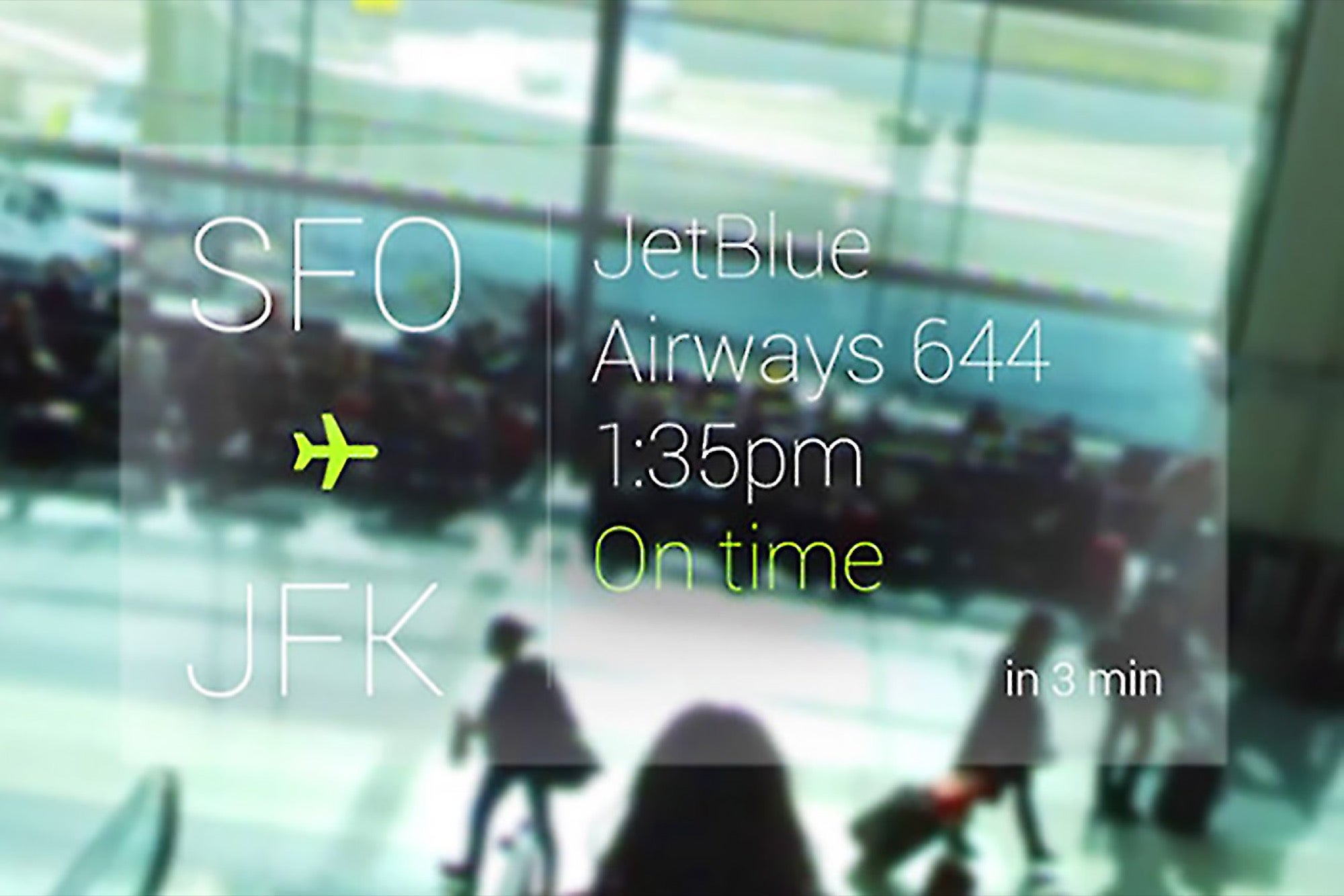The Pros and Cons of Google Glass for Business Travel Despite some drawbacks, Google's futuristic eyewear can be an indispensable travel device.
Opinions expressed by Entrepreneur contributors are their own.

This is the third in a four-part weekly series as I test Google Glass for personal and business uses.
You might get some funny looks from fellow drivers or from security at the airport, but Google's internet-equipped eyewear is built for business travel. From getting helpful navigation information while driving to staying up-to-date on flights and forecasts -- all delivered directly in front of your eyes -- we examine the pros and cons of using Glass on the road and in the air.
Glass for driving
Pro: No need to take your eyes off the road.
Having something on your face while operating a moving vehicle might not sound safe. But from my experience wearing Glass the last few weeks, the device offers a compelling -- if not-quite-there-yet -- solution to distracted driving. Let's face it, laws that ban texting while driving are a deterrent, but many people still sneak a text or check an email behind the wheel anyway.
With Glass, your eyes never have to leave the road. By placing directions above and not in front of your vision, and by offering turn-by-turn spoken directions, Glass subtracts the lion's share of risk. In my opinion, Glass's Google Maps-powered navigation is superior to a dash-mounted smartphone or dedicated GPS system.

Con: Information overload.
If you're prone to distraction and have all of Glass's apps enabled, work-related notifications could eat up your attention, which should be on the road. For driving, I turn off the Gmail app and social media notifications to focus on getting where I need to be, whether it's across town for a meeting or three hours away for a press conference.
Glass can also become a distraction if it loses its Bluetooth connection to your smartphone -- which it needs to get you where you're going.
Glass for air travel
Pro: All you need to know about flights, forecasts and airport amenities.
Glass serves up context-based info like the forecast and commute times much like Google Now. One of Google Now's handiest features is real-time flight updates.
Creepy to some or downright useless to non-Gmail users, Google trawls through your Gmail account for flight confirmations. When your flight is coming up -- within about 24 hours -- Glass will serve up details pertinent to your trip. You can find fight info by scrolling back briefly in Glass's lateral timeline-like interface, so it isn't buried in a sea of photos and texts.
Having a little reminder of key things like flight number, departure time and gate literally at a glance was convenient from my experience. As a frequent flier, I appreciate the peace of mind provided by having all of that information in one easily accessible place.

Con: Unusual devices aren't airport-friendly.
Doing anything out of the ordinary in an airport can be risky when it comes to security. For now, Glass is definitely out of the ordinary.
After steeling myself for potential embarrassment or security detainment, I wore Glass on a flight this week for the first time. I decided to treat it like I would a smartphone, not like normal eyewear, since it's basically a smartphone on your face.
Before going through security, I removed Glass, placed it in my carry-on and put it back on along with my shoes on the other side. After the cabin doors closed, I powered Glass down to play it safe. A passenger in a row in front of me was scolded by the flight attendants for not powering down his smartphone. It wasn't a terrible experience for me, but other travelers will need to be mindful about their use of Glass in the air.
Bottom line: Glass can come in handy.
Google Glass eases some of the more annoying or stressful aspects of traveling, such as texting or taking calls, while carrying luggage or checking flight times. But for now it's something of a wild card. The battery can wear down in about three hours of heavy use, which isn't always convenient when traveling. And Wi-Fi or Bluetooth connectivity can be an issue depending on where you're traveling.
Still, I'd keep Glass on during any future trips, even though encounters with people who were interested in the device slowed me down. In my case, the benefits outweighed the annoyances.










